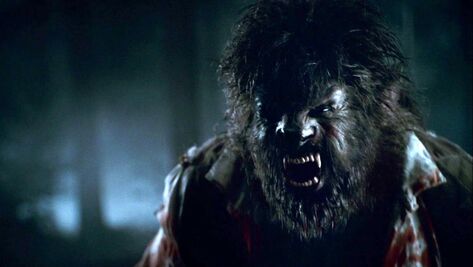Howling for Monster Makeup: A Brief Tribute to the Effects of 'The Wolfman' Ten Years Later2/11/2020  Ten years ago today, Universal’s The Wolfman roared across cinemas around the world. It was, like so many films released in any year’s February, mostly ignored. The Wolfman is not without sin and on the whole, is not a particularly compelling or surprising film. The action sequences are poorly cut and force viewers to attempt to stitch together what is happening rather than enjoying the film... ...The CG transformations are good but far from revolutionary. Anthony Hopkins turns in one of his least creative performances. It is not the best wolfman film by any rubric--Wolf holds that distinction and I will use social media to anonymously snipe anybody who disagrees. But, the 2010 release does have some cultural significance in that it marked a changing point for practical make-up effects in film and is now a high water mark for the craft. When Rick Baker and Dave Elsey won the Oscar for Best Make-Up at the 83rd Academy Awards for the film, they were up against The Way Back and Barney’s Version. The Way Back is an amazing adaptation of the memoir The Long Walk and earned the Best Make-Up nomination for its depiction of the effects of dehydration, starvation, and brutal sun damage on the film’s protagonists. Barney’s Version was nominated for its aging effects; good for their time but by no means spectacular. The Wolfman was the last film to win this award for its creature effects. Since 2010, all films to win Best Make-Up and Hair have fit cleanly into one of the two categories of aging effects (as with The Darkest Hour) or scared and dying humans (as with Mad Max: Furry Road). Feel free to check my work but let me assure you, The Shape of Water wasn’t even nominated. I mention this not to argue that the Motion Picture Academy has been ignoring horror films (we’ve known this to be true for some time) but to point out that since 2010, we have seen fewer and fewer practical creature effects in horror films, especially when it comes to the creatures themselves. The creatures in Annihilation were mostly non-practical thought they did use some animatronics for a handful of scenes (that were then given CGI enhancements). Even Alien: Covenant featured a famously CGI Xenomorph. Directors have moved away from the detailed artistry of prosthetic effects in favor of CG. I realize I’m not the first person to make this observation but one cannot have a conversation about The Wolfman without acknowledging that horror effects changed dramatically after that film. Rick Baker and company’s design of the wolfmen for this film beautifully depict the werewolf as part man, part wolf. Contemporary werewolves as seen in the Twilight films and Red Riding Hood are depicted as not much more than very large wolves. This design lacks the underlying humanity that makes werewolves a unique monster. The creature designs that Rick Baker made show that there is still a glimmer of human intelligence inside the werewolves. Most importantly, we can still see Benico Del Toro under the layers of prosthetics. Subconsciously, this allows us to realize that there is still a human inside the monster. We lose this realization with fully CG creatures. While the film’s final fight is terribly edited, one thing that it does have going for it is that we see a battle between two strong, clawed, and fanged creatures as they use human anatomy and wit to battle each other. Other films depict werewolf fights as something just a bit more scary than a dog attack. The werewolf is a metaphor for human’s violent nature and the struggle against our more animalistic tendencies. We see this dichotomy in Baker’s practical effects more than in the script or the performances, and that's a testament to how effective these effects done with sweat, blood and rubber can be. By Mark Gonzales
0 Comments
Leave a Reply. |
Archives
March 2023
|


 RSS Feed
RSS Feed